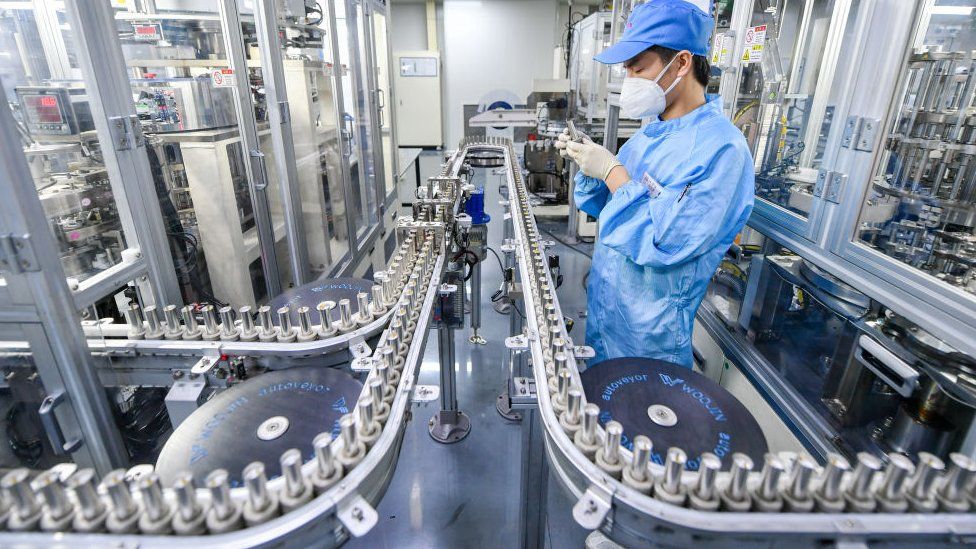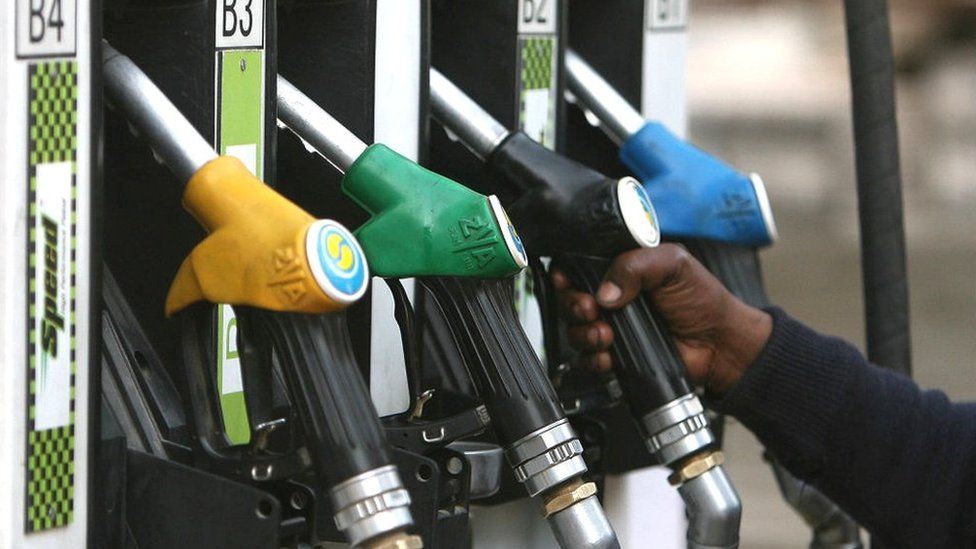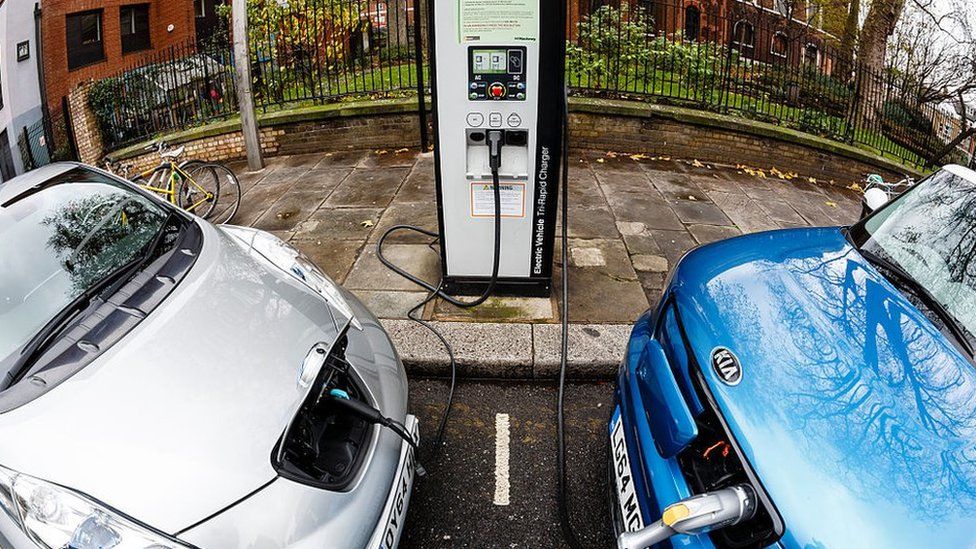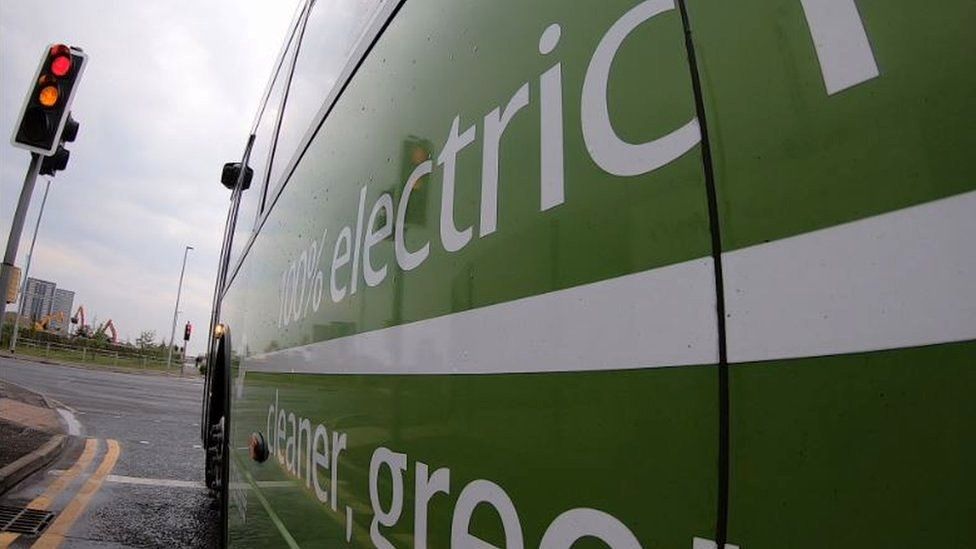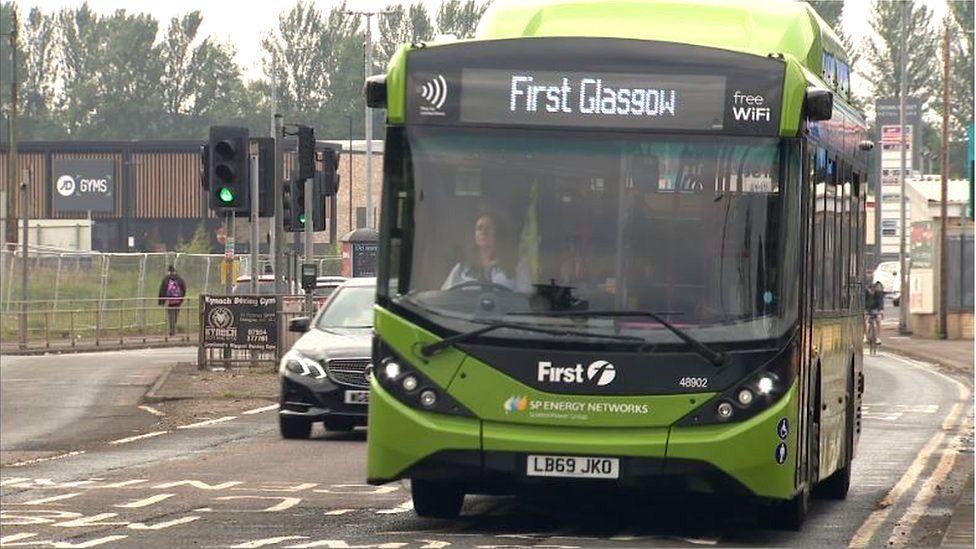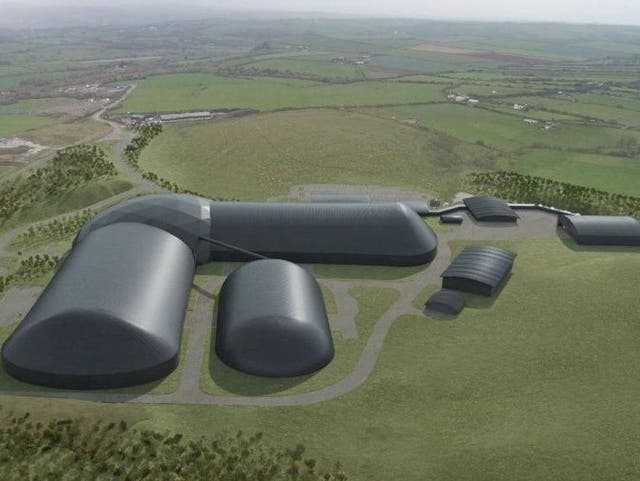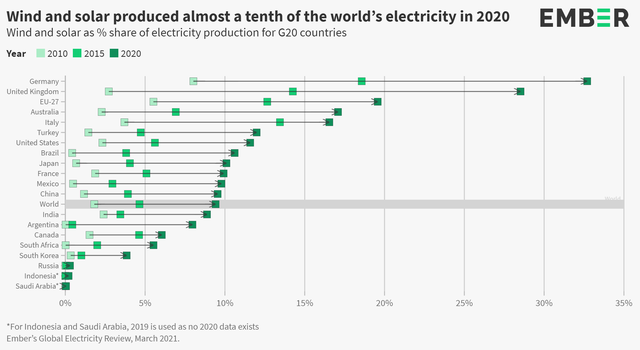
- Space debris is a major threat to the satellite services we rely on
- 13 projects involve industry and academia across the UK
The UK Space Agency is providing £1.7 million for new projects to support sustainable space operations, Science Minister George Freeman announced today.
The 13 new projects will help track and remove dangerous debris in space. They include an AI-based tool which can take autonomous action to avoid a collision and another which will see multiple small spacecraft fired at debris before taking it into the atmosphere to dispose of it.
The Science Minister, UK Space Agency CEO Paul Bate and representatives from the UK space sector met at the Harwell Space Cluster in Oxfordshire to discuss the sustainable future of the space environment today (Monday 31 January).
Orbital congestion created by space debris is one of the biggest global challenges facing the space sector. There are currently an estimated 330 million pieces of space debris, including 36,500 objects bigger than 10cm, such as old satellites, spent rocket bodies and even tools dropped by astronauts orbiting Earth.
Space debris can stay in orbit for hundreds of years and present a real danger to the rapidly increasing number of new satellites being launched each year which provide vital services, including communications and climate change monitoring.
Science Minister George Freeman said:
Like debris on Everest, the first generation of space exploration and satellite launch has left millions of pieces of dangerous satellite fragments and 4,000 redundant satellites in orbit.
As our reliance on satellites for everyday activity grows, and the UK becomes a leading hub of small satellite design, manufacturing and launch this year via Virgin Orbit in Cornwall, this debris now poses a serious threat to our £16 billion space sector.
That’s why we have made debris mitigation and removal – and the long-term importance of space sustainability – key elements of our National Space Strategy.
These projects will help put the UK at the forefront of both protecting the space environment for future activity, and accelerating UK technology leadership.
The UK’s National Space Strategy set out a bold vision for the sector and recognises the need for the UK to lead in making space safe and sustainable. The new funding supports the development of underlying technology or data processing capabilities for space surveillance and tracking to support the removal of orbital debris.
In the past two years the UK Space Agency has provided £2.7 million for UK industry and academia to develop new technology for Space Surveillance and Tracking (SST) and debris removal, as well as investing around £16 million on space sustainability through the European Space Agency in 2019.
The UK is the largest contributor to ESA’s Space Safety Programme. This new funding comes from a joint call from the UK Space Agency’s Space Surveillance and Tracking and National Space Technology Programme.
Managing Director, Astroscale Ltd and Co-Chair of the IOSM Working Group, UKspace, John Auburn said:
We need to act now to build the UK’s capability with the right level of UK investment; enhanced UK regulation and policy; supply chain development, and international partnerships. The In-orbit Servicing and Manufacturing (IOSM) working group, part of UKspace, is comprised of more than 65 members.
This rapidly expanding group is driving forward a shared vision to gain first leader commercial advantage in the in-orbit servicing and manufacturing sector. We must accelerate our efforts to secure a safe and sustainable space environment and see it as a natural extension of the Earth’s environment. This will help to protect vital services, including those monitoring climate change, weather forecasting, disaster management and digital services for citizens and ensure we can provide them for generations to come.
In 2021 the UK Space Agency worked with the UN Office for Outer Space Affairs (UNOOSA) to support the next stage of international efforts to promote space sustainability and provided funding to research a UK-led mission to remove junk from space.
The 13 projects in detail
Plasma thruster based Automated Deorbiting-Block system (PAD-B)
- Lead: Magdrive
- Partners: University of Southampton
- Funding: £199,500
Magdrive and the University of Southampton are investigating the feasibility of the Plasma thruster based Automated Deorbiting-Block (PAD-B) system. A mothership will carry many of these ~1 kg nano-spacecraft, which can be fired at debris from afar. These will attach and work together to autonomously bring the debris into the atmosphere to dispose of it. Through this project the team will investigate the feasibility of PAD-B and deliver flight hardware for a subcomponent prototype space flight in June 2022.
- Lead: Oxford Dynamics Limited
- Partners: In-Space Missions Ltd
- Funding: £157,500
Oxford Dynamics (OD) and In-Space Missions (ISM) are collaborating on the development of an innovative AI-based Space, Surveillance and Tracking (SST) tool, known as, “The Great Eye”. The project builds upon work by OD to provide the foundations for a satellite payload able to take autonomous collision avoidance decisions. The project also includes a novel ground ops Graphical User Interface (GUI) to demonstrate the tool’s capabilities. It will use OD’s expertise in payload development and AI machine vision, and ISM’s expertise in the design and supply of small, cost-effective satellites, to address an identified global market opportunity.
Supermagdrive ADR
- Lead: Rocket Engineering
- Partners: Magdrive Limited, Tokamak Energy
- Funding: £198,500
High thrust electric propulsion will enable new space missions and businesses to thrive in space, allowing highly efficient precision manoeuvring in low orbits, a key requirement for space surveillance and tracking. The critical underpinning capability is harnessing high plasma densities with ultra-strong magnetic fields. This project will combine electric propulsion technology developed by Magdrive with superconducting magnet technology developed by Tokamak Energy for use in fusion power plants. Testing of key components aims to raise the technology readiness of thruster designs in a partnership between Rocket Engineering, Magdrive and Tokamak Energy.
Hyperspectral Imager for Space Surveillance and Tracking (HyperSST)
- Lead: University of Strathclyde
- Partners: Fraunhofer UK Research Ltd, Fraunhofer Centre for Applied Photonics
- Funding: £169,500
Project HyperSST will demonstrate the use of new hyperspectral imaging sensors to detect and characterise objects orbiting around the Earth. HyperSST will mix advanced hyperspectral technology with modern deep learning techniques to better understand the composition of space objects, their motions and predict their intentions. This project will demonstrate the use of hyperspectral imaging and AI for both on ground and in-orbit sensing and the detection and characterisation of objects of different size and nature, from active satellites to derelict upper stages.
Advancement of UK capabilities to identify the attitude state of resident space objects in Low Earth Orbit (LEO)
- Lead: Astroscale Ltd
- Partners: Northern Space and Security Ltd, Lumi Space Ltd
- Funding: £55,000
The goal of this proposal is to advance the development of UK capabilities to determine how an uncontrolled object, whether it’s an inactive satellite or piece of debris, is spinning in space. An object’s spin or tumble is important to know when planning missions to clean up space by removing them from orbit. Capturing these objects safely requires delicate and precise manoeuvring, and if the space object is tumbling too fast or in a way that makes it tricky to capture, this needs to be understood before the servicer spacecraft is in orbit. This grant will help develop UK capability to ensure this information is available for such missions in the future.
ODIN detector TRL Advancement
- Lead: ODIN Space
- Partners: N/A
- Funding: £91,000
ODIN Space is developing state-of-the-art, on-orbit detectors that will track lethal fragments of space debris, enabling essential risk management across the entire space ecosystem. ODIN Space detectors are sensitive to the tiniest pieces of orbital debris (0.01 – 2 cm) that are invisible to existing tracking solutions. Using a network of detectors, this will map the orbital debris environment, providing essential insights into the position, size, speed, trajectory and number of dangerous objects in LEO and GEO. The ODIN Space team is currently developing a deployable, flight-ready framework that will serve as the foundation for a future in-orbit demonstration of their detection technology.
Artificial Intelligence for Space Surveillance and Tracking (AI4SST)
- Lead: University of Strathclyde
- Partners: Imperial College London, D-Orbit UK
- Funding: £153,500
This project will use the Computational Agent for Space Situational Awareness aNd Debris Remediation Automation (CASSANDRA) framework, which uses advanced artificial intelligence technology to help operators to manage traffic in orbit and avoid collisions between satellites and space debris. Project AI4SST will endow CASSANDRA with the ability to accurately forecast the position of space objects starting from radar observations. CASSANDRA will then be able to assist operators to make informed and reliable decisions on whether to perform a collision avoidance manoeuvre or schedule a new radar observation.
Extended Exploration of Census Program
- Lead: D-orbit
- Partners: N/A
- Funding: £34,000
D-Orbit will build on a successful project last year to exploit a new capability to enable routine, targeted space-based low Earth orbit Space, Surveillance and Tracking (SST) observations. By using D-Orbit’s ION Satellite Carrier, an orbital transportation vehicle with a multi-year lifetime and propulsion capability, D-Orbit can offer an unprecedented opportunity to observe debris both passively and actively. ION cameras will be repurposed to capture images of space objects for processing on board and on ground, as well as exploring how the capability can be augmented by system upgrades.
Optimised Observations and Machine Learning for Space Safety
- Lead: Cranfield University
- Partners: University of Oxford, University of Surrey
- Funding: £196,500
This project aims to improve our understanding of how we can monitor space objects in orbit, and to develop efficient tools to help us plan and implement safer ways to operate spacecraft. It aims to support UK leadership in this field, and an important output of the project will be an upgrade to the open-source software Kessler, which implements machine learning techniques to significantly accelerate predictions of space object close approaches.
Advancement of UK Capabilities in Satellite Laser Ranging
- Lead: Lumi Space
- Partners: University of Surrey, Durham University, SJE Space Ltd
- Funding: £85,500
This project pushes Lumi Space forward in developing an advanced satellite laser ranging (SLR) system which is a simple but powerful method that uses light to track satellites. Continuing the work carried out last year, this project advances novel aspects of laser ranging technology and levels-up the technology readiness of the company. Lumi Space continues to strive for a more sustainable and accountable use of space, by bringing the UK closer to commercial SLR capabilities.
Beacon for Evaluation of Attitude and Position – BEAP
- Lead: UK Launch Services Ltd
- Partners: Alta Range
- Funding: £79,000
This involves a study to look at the commercial and practical feasibility of a novel Space Surveillance and Tracking (SST) service which is built around the principle of ‘tagging’ space objects. The system would allow active tracking, at very low cost, and with minimal impact and intrusion on the space objects themselves.
PAssive raNging anD ORbitogrAphy for mega constellations for STM – PANDORA
- Lead: GMV NSL
- Partners: N/A
- Funding: £86,000
The PANDORA project will assess the potential to deliver an innovative new Space Surveillance and Tracking system for Low Earth Orbiting satellites based on the use of a ‘Passive Ranging’ concept. This concept uses communications signals from LEO constellations as ranging measurements to feed precise orbit determination and prediction of LEO satellites.
The orbital knowledge of LEO satellites is becoming increasingly important as part of future Space Traffic Management (STM) concepts and operations. The PANDORA project will quantify the performance of the passive ranging technique in delivering accurate predictions and manoeuvre detection of LEO satellites. It will prepare a roadmap towards the commercial implementation and exploitation of this new capability within the UK.
Fast determination of satellite re-entry and fragmentation
- Lead: University of Strathclyde
- Partners: Imperial College London, D-Orbit UK
- Funding: £199,000
Fast, physically accurate tools for the analysis of the re-entry of controlled and uncontrolled objects are critical to many in the space sector. In particular, improved modelling and simulation of the deformation and fragmentation is paramount to design systems for safe demise and assess the associated risk. Joints are critical components of a spacecraft when it comes to fragmentation, this project will develop models to predict the structural failure of primary joints and hinges on satellites subject to high aero-, thermo- and flight dynamic loads, integrating the models and tools into an existing open-source framework for analysis of atmospheric re-entry. This will allow the UK to achieve a competitive edge against European counterparts in the challenging race towards a sustainable use of space.
Source Gov UK

